How a canal is bringing water, fish and hope to farmers in Cambodia
A project funded by Japan and facilitated by the World Food Programme is changing lives in a community hit by erratic weather linked to climate extremes
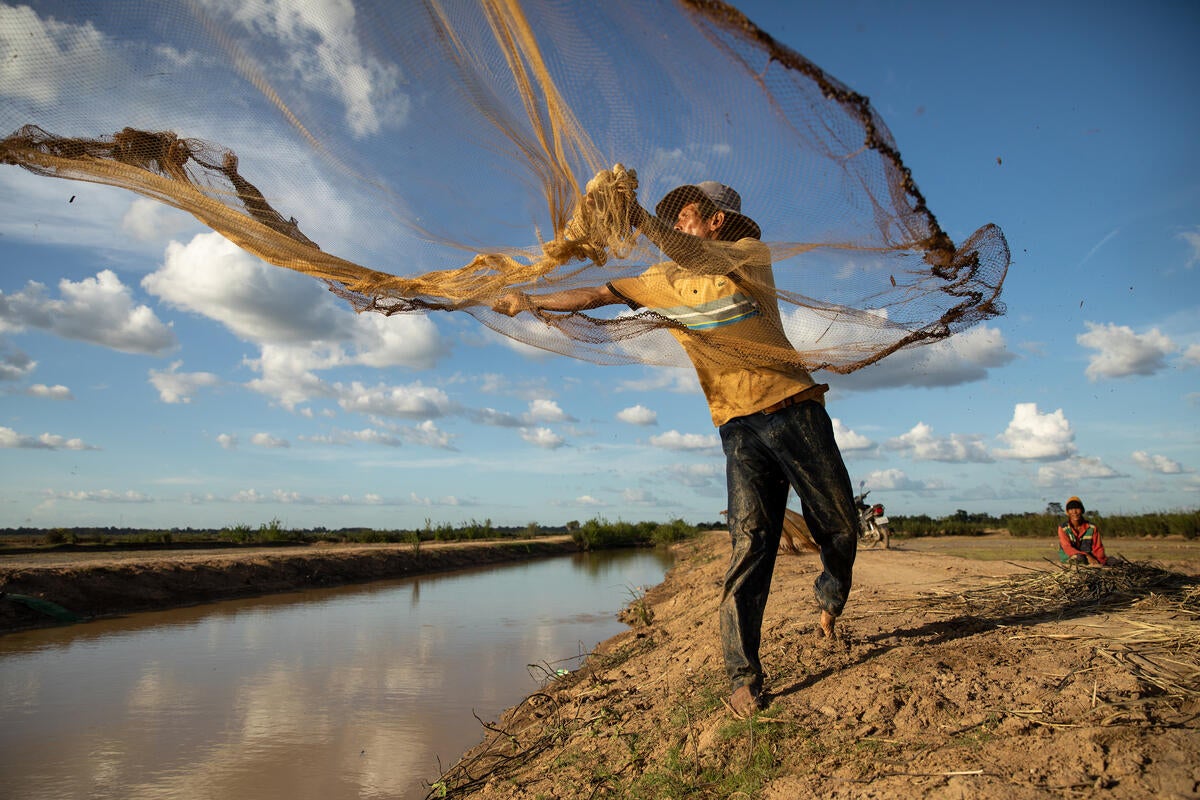
Your support helps us to tell the story
This election is still a dead heat, according to most polls. In a fight with such wafer-thin margins, we need reporters on the ground talking to the people Trump and Harris are courting. Your support allows us to keep sending journalists to the story.
The Independent is trusted by 27 million Americans from across the entire political spectrum every month. Unlike many other quality news outlets, we choose not to lock you out of our reporting and analysis with paywalls. But quality journalism must still be paid for.
Help us keep bring these critical stories to light. Your support makes all the difference.
“When my crops depended on rain, it was like making a contract with the Weather God. I did my best, but if He didn’t send water at the right time, I would still lose my crop. With the canal, it is different. The canal ensures there is water. The rest is up to our hard work.”
This, in the words of rice farmer Deur Sok, is the difference a canal built in 2022 as part of a World Food Programme-backed project is making in Sambour, a commune in central Cambodia’s Kampong Thom province.
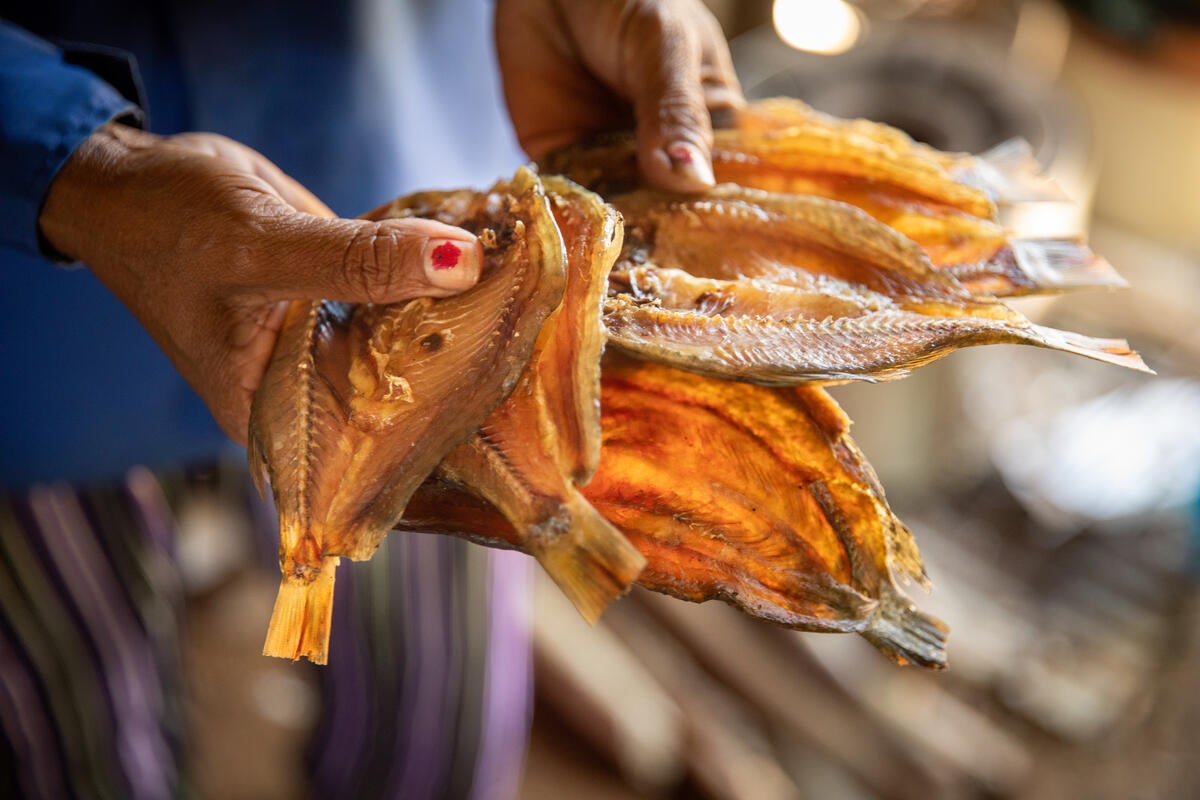
It is the time of day when the setting sun turns the rice fields – stretching as far as the eye can see – gold, silver and pink. Deur Sok stands on the bank of the canal, looking lovingly at his one-hectare plot where tender seedlings are beginning to emerge from the water.
“It really makes me happy to see all this green. I take care of my plants like babies. They are very fragile at this young stage,” he says.

Far too often in the past he has seen his plants wilt when there was not enough water – or washed away when there was too much. “It breaks my heart,” he says.
The 2.3km-long canal, funded by the government of Japan, allows for the irrigation of 143 hectares of rice paddies, benefitting 128 families.
As local official Toun Chen explains, changing weather patterns in the past few years have caused an unpredictable succession of drought and flooding, which spelled disaster for farmers relying on so-called wet season – or rainfed – rice cultivation.
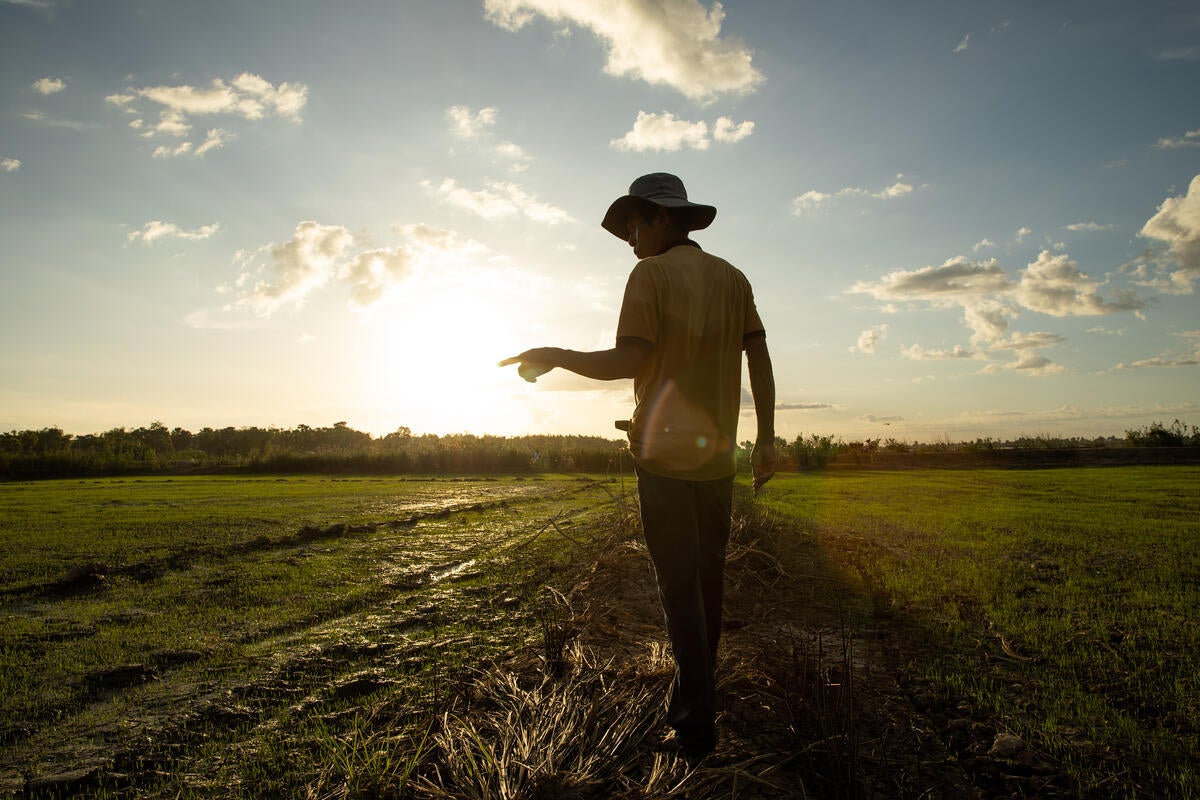
Being able to pump water from the canal has broken their dependence on erratic weather events. As a result, their yields have more than doubled. “Over the past two years, even if there was drought, we have managed to have some water. Crops are not failing like they used to. It is a success for us,” he says.
Deur Sok can now grow two crops of rice a year, regardless of the season. “I now have enough to eat and I don’t have to buy rice from others,” he says. His wife, Phat No, recalls the hard times before the canal: “The money we borrowed to do farming became debt that we could not repay. My two sons and my husband had to go to Phnom Penh to work in construction to earn some money to get by,” she says.
Now, he no longer has to do that.
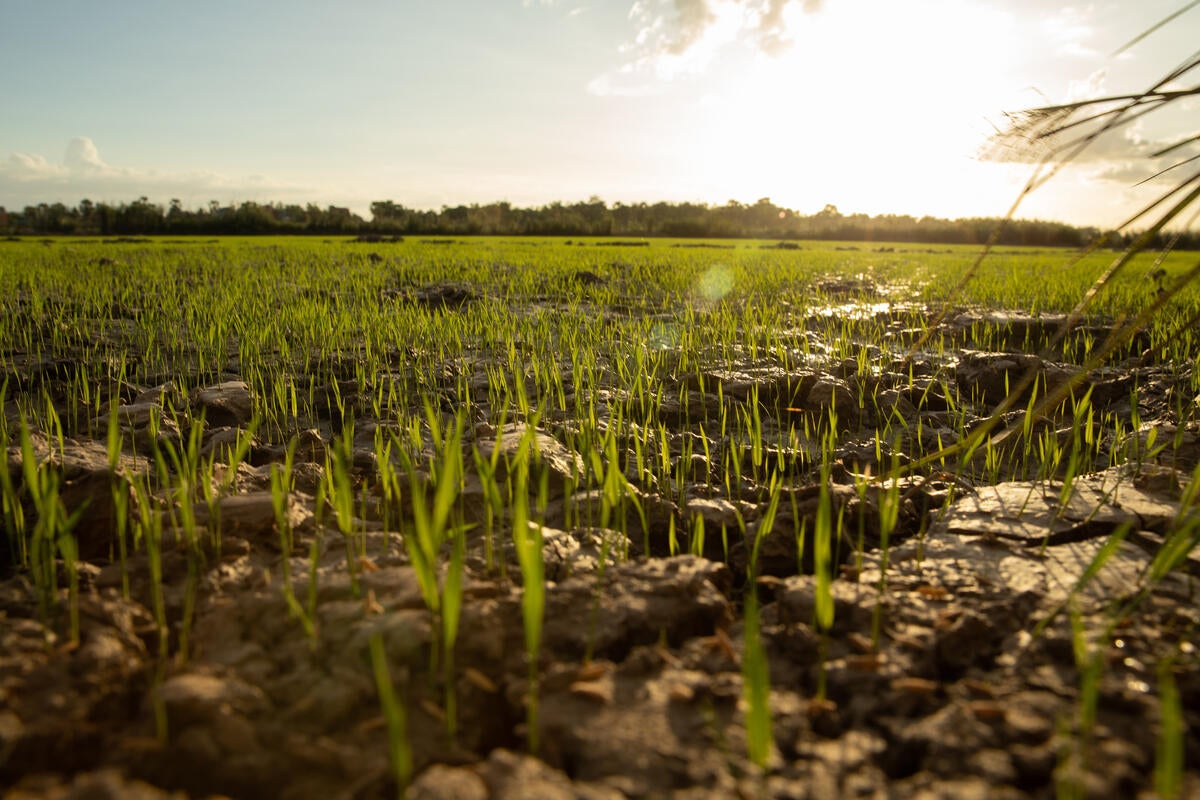
The couple live in a small wooden house a short distance from the rice fields. Since a storm blew off the zinc roof, they are too afraid to sleep upstairs and prefer to live in the earth-floored open space downstairs. “The weather now is not like before. The rain, winds and thunder are like the Weather God is being angry,” says Phat No.
Broader impact
With agriculture accounting for 30 per cent of Cambodia’s GDP, action to minimise the impact of climate events on farming productivity has direct consequences on economic growth.
This is why WFP works with national and local authorities in 16 communes across four provinces to build local capacity to adapt to a changing climate and support investments in climate-resilient infrastructure. WFP promotes awareness of climate-related issues among local public officials and works to improve the circulation of climate, weather and seasonality information to farmers.
In Sambour commune, the community identified two key priorities: irrigation and transport. For this reason, when the canal was built, the bank was reinforced so it could serve as a road.
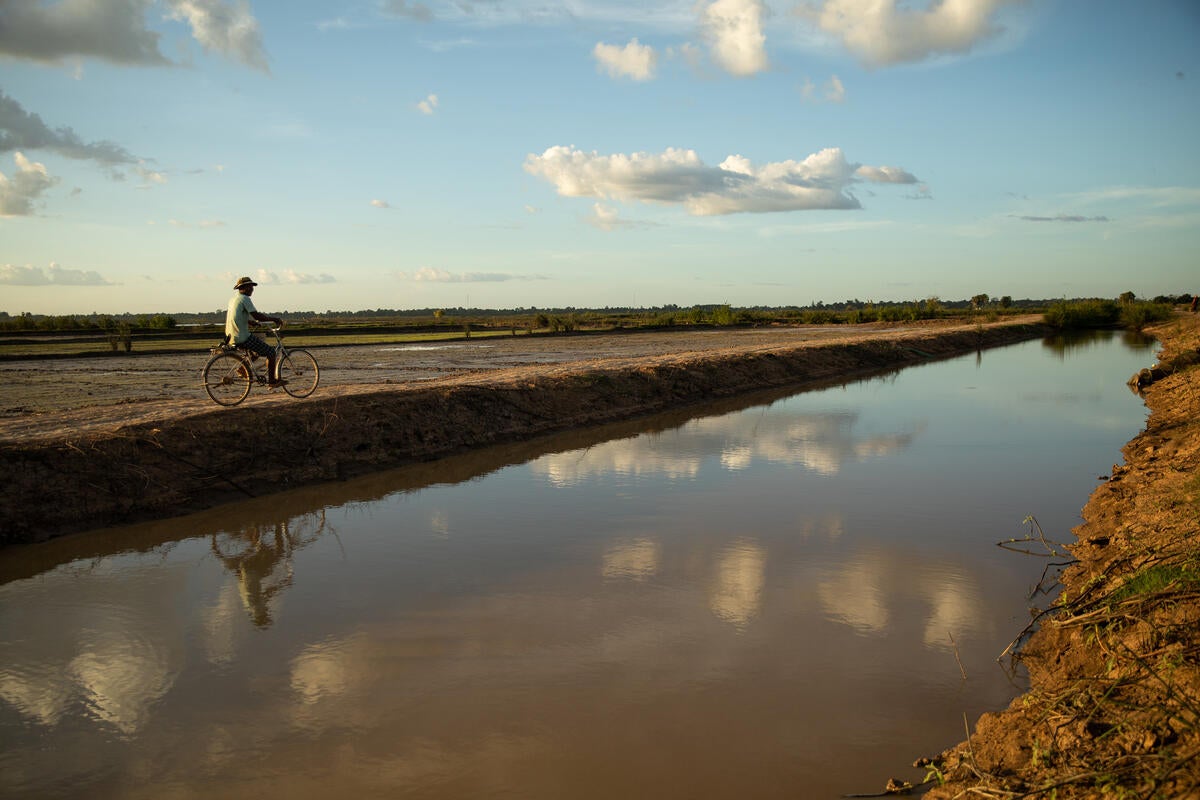
Every morning at dawn, as he cycles along the bank, Deur Sok stops to cast his net into the canal with a deliberate swirling movement. After he brings the day’s catch home, he comes back to tend to the field. At this time of year, one of his jobs is to cut the grass along the borders of his plot so that mice cannot hide there and damage the banks or nibble on the budding plants. “My family’s life depends on this field and I just want to make sure everything is right,” he says.
At sunset, he goes back to check his net again. “This region is famous for fish and there are many varieties in the canal,” he says. As we talk, Phat No is skillfully scaling and boning sardine-sized fish. She is preparing a marinade that will add flavour to her dishes. “Some days, I catch more than we need, so I sell the surplus to my neighbours,” Deur Sok says. The extra money goes towards buying condiments and other everyday items.
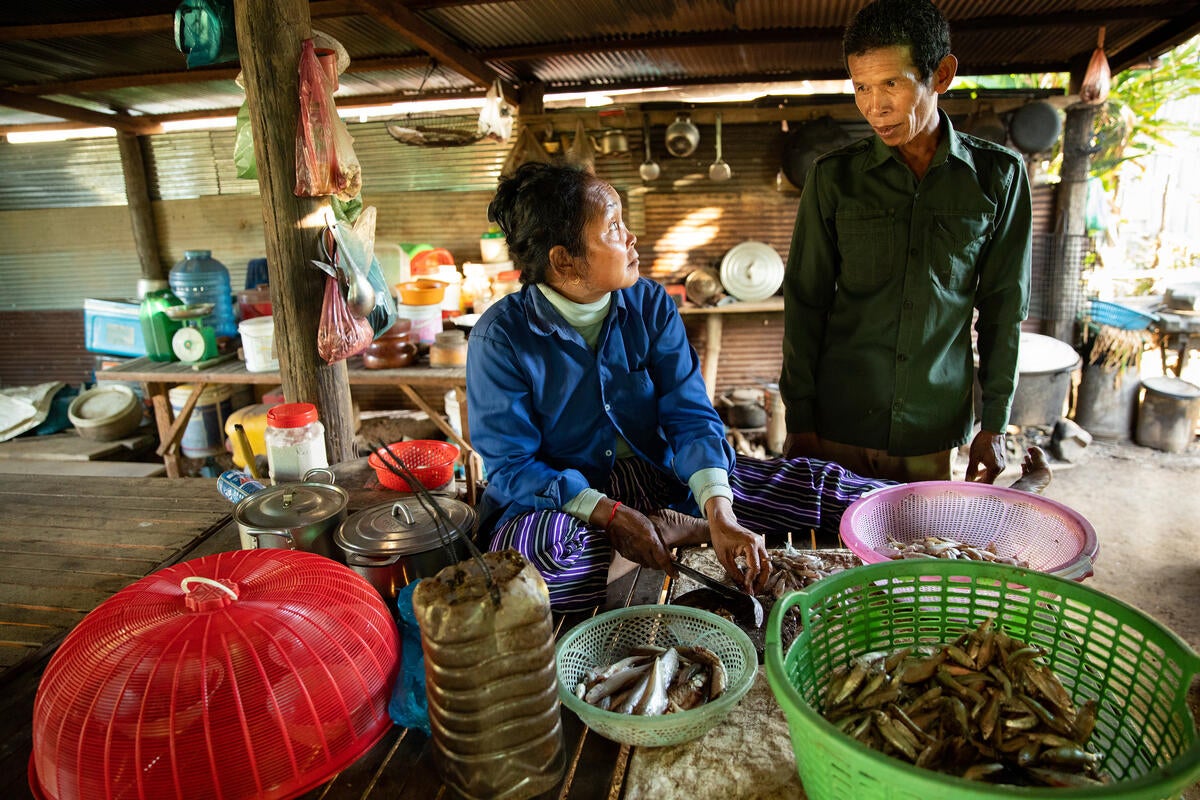
While the couple still depend on the money their two grown-up sons send home for things like fuel and fertilizers, being able to harvest rice twice a year and catch fish in the canal has changed their lives.
“I am not afraid of hard work, but I am afraid of uncertainty,” says Deur Sok. “With the canal, we can predict how much we produce in accordance with how hard we work. I believe in my hard work. When I work harder, I get better results.”
Read more about WFP’s work in Cambodia here
Join our commenting forum
Join thought-provoking conversations, follow other Independent readers and see their replies
Comments